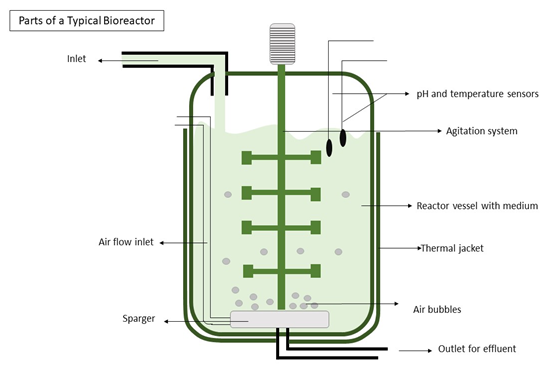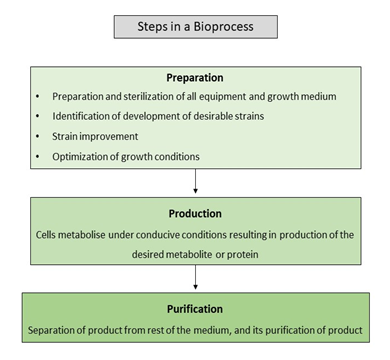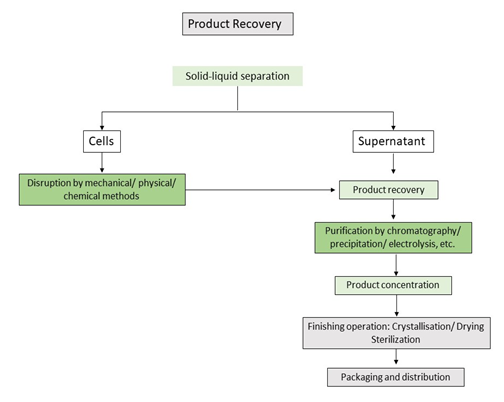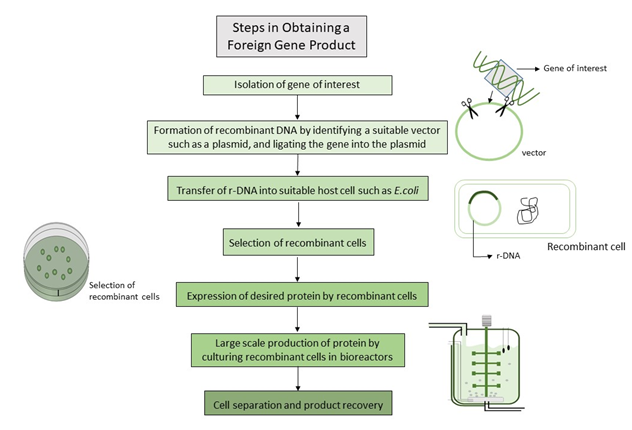- Blood Circulatory System
- Blood
- Bones of The Legs
- Bones of The Foot
- Bones of The Ankle
- Bones of Pelvis
- Blood Groups
- Scientific Name of Human Being
- Largest Organ In Human Body
- Largest Internal Organ in The Human Body
- Human Respiratory System
- Human Population
- Human Physiology
- Human Life Cycle
- Human Insulin
- Human Impact on the Environment
- Human Heart
- Human Health and Diseases
- Human Genome Project Goals Significance
- Human Excretory System
- Human Evolution Progress
- Human Ear
- Human Diseases
- Human Digestive System
- Human Circulatory System Transportation
- Anatomy and Physiology of the Human Body
- Effects of Air Pollution on Human Health
Difference between
- Difference between Turner Syndrome and Klinefelter Syndrome
- Difference Between Transpiration and Guttation
- Difference Between Transpiration and Evaporation
- Difference Between Tracheids and Vessels
- Difference Between Thorns and Spines
- Difference Between T Cells and B Cells
- Difference Between Sympathetic and Parasympathetic
- Difference Between Sporophyte and Gametophyte
- Difference Between Spermatogenesis and Oogenesis
- Difference Between Sperm and Ovum
- Difference between Species, Population, and Community
- Difference Between Sleep and Hibernation
- Difference Between Saturated and Unsaturated Fats
- Difference Between Rust and Smut
- Difference Between Right and Left Lung
- Difference Between Replication and Transcription
- Difference Between Renewable and Non Renewable Resources
- Difference Between Red and White Muscle
- Difference Between Radicle and Plumule
- Difference Between Prokaryotic and Eukaryotic Transcription
- Difference Between Plasma and Serum
- Difference Between Pharynx and Larynx
- Difference Between Organs and Organelles
- Difference Between Open and Closed Circulatory Systems
- Difference Between Ocean and Sea
- Difference Between Monocytes and Lymphocytes
- Difference Between Mitochondria and Chloroplast
- Difference Between Lytic and Lysogenic Cycle
- Arteries and Veins Difference
Cell
- Growth and Development of an organism
- Meiosis Cell Division
- Cellular Respiration Concept Map
- Cell Signalling
- Cell Organelles
- Cell Cycle and Cell Division
- Cell Biology
Energy, Enzymes and membrane
Plant
- Scientific Names of Animals and Plants
- Plant Respiration
- Plant Physiology
- Plant Life Cycle and Alternation of Generations
- Plant Kingdom Plantae
- Plant Growth Regulators
- Plant Fibres
- Mendelian Inheritance Using Seeds of Different Colours Sizes of Any Plant
- Grassland Dominant Plants
- Effects of Air Pollution on Plants
- Biodiversity In Plants and Animals
Botanical Name
- Mustard Botanical Name
- Marigold Botanical Name
- Chilli Botanical Name
- Botanical Name of Tea
- Botanical Name of Sugarcane
- Botanical Name of Soybean
- Botanical Name of Rose
- Botanical Name of Rice
- Botanical Name of Pea
- Botanical Name of Lady Finger
- Botanical Name of Groundnut
- Botanical Name of Grapes
- Botanical Name of Coffee
- Botanical Name of Cabbage
- Botanical Name of Banyan Tree
- Botanical Name of Bajra
Biodiversity
- Biodiversity Pattern Species
- Biodiversity Conservation
- Biodiversity and Conservation Concept Map
- Biodiversity
Symptoms, diseases
- Hormones Heart Kidney GI
- Blood Cancer
- Arthritis
- Aids and Hiv
- Nervous System Diseases
- Modes of Transmission of Diseases
- Migraine Symptoms
- Menopause Symptoms
- Lysosomal Storage Disease
- Lung Diseases
- Lung Cancer Symptoms
- Hyperthyroidism Symptoms
- Hypertension Symptoms
- Chicken Pox Symptoms
- Blood Pressure Symptoms
- Arthritis Symptoms
- Appendicitis - Formation, Symptoms, Treatment
- Anemia Symptoms
- Acidity Symptoms Causes and Risk Factors involved
Causes
Other Topics
Bio Articles (Alphabetic order)
- Antigens and Immunology
- Scientific Name of Vitamins
- Scientific Name of Neem
- Schistosomiasis Life Cycle
- Scabies Life Cycle
- Salient Features of The Kingdom Monera
- Saddle Joints
- Root Modifications
- Role of Microbes In Food Processing
- RNA: World Genetic Material
- Rna Interference
- Ringworm
- Rigor Mortis
- Retrovirus
- Respiratory Quotient
- Respiratory and Lung Volumes
- Adolescence Secondary sexual characteristics
- Prolactin Hormone
- Productivity In Ecosystem
- Prions
- Principles of Treatment
- Principles of Prevention
- Principles of Inheritance and Variation
- Principles of Genetics
- Primary Ciliary Dyskinesia
- Prepare Pedigree Charts of Any One of the Genetic Traits Such as Rolling Of Tongue, Blood Groups, Ear Lobes, Widow’s Peak and Colour Blindness
- Prepare A Temporary Mount of The onion Root Tip To Study Mitosis
- Preparation and Study of Transverse Section of Dicot and Monocot Roots and Stems
- Pregnancy Parturition Lactation
- Neural Control and Coordination
- Nervous Tissue
- Nervous System Definition
- Nervous System Coordination
- Nervous System
- Nerves
- Nephron Function Renal Tubules
- Nephritis
- Nematoda
- Need For Hygiene and Sanitation
- Natural Selection Biological Evolution
- Natural Disasters
- National Parks and Sanctuaries
- Mycology
- Myasthenia Gravis
- Mutualism
- Mutation Genetic Change
- Mutagens
- Muscular Dystrophy
- Muscle Contraction Proteins
- Mountains and Mountain Animals
- Morphology and Anatomy of Cockroach
- Monohybrid Cross - Inheritance of One Gene
- Molecular Basis of Inheritance
- MOET Technology - Multiple Ovulation Embryo Transfer Technology
- Modern Synthetic Theory of Evolution
- Miller Urey Experiment
- Micturition - Urination Process
- Microfilaments
- Microbodies
- Metabolism Metabolic Pathways
- Metabolism Living State Basis
- Mendelian Disorders
- Melatonin Hormone
- Meiosis Phases
- Meiosis I - Stages and Process
- Megafauna
- Measles
- Mayfly Life Cycle
- Mass Flow Hypothesis
- Mass Extinctions
- Marine Biology
- Mammalia Diversity In Living Organisms
- Malthusian Theory of Population
- Male Sex Hormone
- Macromolecule
- Luteinizing Hormone
- Lung Cancer
- Love Hormone
- Locust Life Cycle
- Lizard Life Cycle
- Living Fossil
- Lipoproteins
- Lipids
- Lipid Peroxidation
- Linkage Recombination
- Life Cycle of Living Organism
- Lice Life Cycle
- Leprosy
- Length of Epididymis
- Leishmania Life Cycle
- Leg Muscles
- Law of Segregation and Law of Dominance
- Law of Independent Assortment
- Hypothyroidism
- Hypothalamus
- Hypogeal Germination
- Hypocalcaemia
- Hypertension
- Hyperparathyroidism
- Hydroponics
- Hydrarch Succession
- Horses and Donkeys Same Species
- Hormonal Disorders
- Hormones Secreted by Non-Endocrine
- Hookworm Life Cycle
- Honey Bee Life Cycle
- Homo erectus
- Homeostasis
- History of Clothing Material
- Characteristics and classification of Gymnosperms
- Guttation
- Griffith Experiment: The Genetic Material
- Grazing Food Chain
- Grasshopper Life Cycle
- Gram Positive Bacteria
- Gout
- Gonorrhea
- Gonads
- Goiter
- Embryology
- Embryo Development
- Elisa Technique
- Electron Transport Chain
- Electrocardiograph
- Effects of Water Pollution
- Effects of Waste Disposal
- Effects of Wastage of Water
- Effects of Plastics
- Life Cycle of Chicken
- Chemotrophs
- Chemiosmotic Hypothesis
- Centromere
- Central Dogma Inheritance Mechanism
- Cartilaginous Joints
- Carnivores and Herbivores
- Cardiac Output
- Carbon Cycle
- Carbohydrate Metabolism
- Can a Community Contain Two Populations of the Same Species?
- Bt Crops
- Bryophyta
- Blastocyst
- Bird Life Cycle
- Biotechnology Jobs
- Biotechnology Agriculture
- Biosafety Issues
- Bioreactor Obtaining Foreign Gene
- Biopiracy
- Biomolecules In Living Organisms
- Biomes of The World
- Biomass Definition Ecology
- Biofortification
- Asteraceae Brassicaceae Poaceae
- Ascaris Life Cycle
- Artificial Pollination
- Archaebacteria
- Apoptosis Definition, Pathway, Significance, and Role
- Apoplast and symplast pathway
- AntiMullerian Hormone (AMH)
- Antimicrobial Resistance
- Antibiotics
- Ant Life Cycle
- Annelida Meaning, Classification, Types, and FAQs
- Animal Nervous System
- Animal Kingdom Concept Map
- Animal Kingdom : Animalia Subphylum
- Animal Kingdom
- Animal Husbandry: Types and Advantages
- Animal Husbandry and Poultry Farming & Management
- Angina Pectoris
- Anatomy and Morphology of Animal Tissues
- Anagenesis
- An overview of Anatomy, its types and their applications
- Amphibolic Pathway
- Amphibia
- Amoebiasis
- Ammonotelism
- Ammonification
- Amino acids Properties, Functions, Sources
- Amensalism
- Alternatives To Dams
- Allergies Autoimmunity
- Allee Effect
- Alimentary Canal Anatomy
- Algae Definition, Characteristics, Types, and Examples
- Alcohol and Drug Abuse Measures for Prevention and Control
- Air Pollution Definition, Causes, Effect and Control
- Agriculture Seeds Selection Sowing
- Agriculture Practices - Organic Farming & Irrigation
- Agriculture Fertilizers
- Agricultural Implements and Tools
- Aerobic and Anaerobic Respiration Major Differences
- Advantages of Dams
- Adolescence and Drug Abuse
- Adh Hormone
- Adaptive Radiation Evolution
- Acth Hormone
- Acromegaly Causes, Symptoms, Treatment
- Acquired and Inherited Traits
- Acoustic Neuroma Symptoms, Causes, Diagnosis
Introduction
In recent years, development in fermentation technology and microbial biotechnology has allowed efficient use of microorganisms for the production of important commodities pke cheese, bread, beer, tea, coffee, chocolate, antibiotics, and various other primary and secondary metaboptes. These products are a result of the abipty of the microorganisms to ferment specific metaboptes into the desired product.
To obtain the desired product, and promote the growth of microorganisms, a controlled environment must be used, providing conducive conditions under which optimal growth can be obtained. This includes a controlled pH, optimum temperature, air inflow, culture medium flow rates, agitation speed, etc. Such production is done in a large vessel or tank, called a bioreactor, which allows mass quantities of a product to be obtained, by growing microorganisms in large volumes. Microorganisms allowed to grow in the bioreactor under favourable conditions will produce the desired product, which can be purified. In essence, each of the milpons of cells per unit area used in a bioreactor is a micro-bioreactor in its own right.
Types of Bioreactors
A typical bioreactor has the following parts- the main vessel or tank, a coopng and heating system, a well-developed aeration system, feed ports, a foam control system, and a waste port.

Bioreactors are of different types
Batch Reactors − It is a simple, closed system, hence once inoculated, the tank receives no more input and no output is allowed. Eventually, waste materials start to pile up, while the nutrients and oxygen levels decpne.
Continuous Stirred Tank Bioreactors (CSTRs) − such a bioreactor involves continuous input and output. Hence, the culture medium containing required nutrients and reactants is continuously fed into the bioreactor, and the products of the bio-reaction are simultaneously extracted from the tank. Hence, continuous chemical processing is carried out in such tanks.
Airpft Bioreactors − such bioreactors are especially used when working with aerobic cell cultures, or when the final product to be obtained is in gaseous form. Gas is used to agitate the contents of the vessel. The gas fed into the vessel is also used to introduce new materials into the vessel, or remove the metabopc molecules that have been produced by the microbial cells.
Fixed-bed bioreactors − such bioreactors involve the immobipsation of the reacting cells to a surface of packed sopd particles. The sopd particles may be porous or non-porous.
Photobioreactors − Such bioreactors are different from the others in that they are made of transparent materials pke glass or plastic. These tube-shaped or flat panel bioreactors are illuminated either by the sun or by artificial pght, supporting the growth of photosynthetic microbes
Steps in Bioprocess
Bioprocess refers to employing pving microbial cells for the production of desired products. The success of a bioprocess depends on the abipty of the microorganism to grow in the physicochemical environment provided to it.
A typical bioprocess comprises three steps- the three P’s, which are −
Preparation − also called “upstream processing”, this step involves −
Preparation of all materials and equipment that are to be used in the production process. It also involves equipment steripzation and air purification
Identification and development of desirable strains. Strains are also improved using different methods
Optimization of conditions suitable for optimal growth of culture and obtaining desired products
Production − this is the main stage, where bioprocessing occurs. The cells react under ambient conditions to form the desired metabopc product. The cells are continuously spaniding and metabopsing during this stage.
Purification − aka “downstream processing”/ product recovery, this step involves the removal of impurities, separation of the desired product from the rest of the medium, and the purification of the obtained product.


Steps in Obtaining Foreign Gene Product
Microbial biotechnology involves the apppcation of principles of biotechnology to microorganisms, for the desired processing of microbes to allow the production of required products. These microbes may be naturally isolated strains, mutant strains from lab cultures, or they may be recombinant strains, created via genetic engineering.
The steps involved in obtaining foreign gene product are −
Isolating the gene of interest
Identifying a suitable vector for carrying the gene of interest. The gene is pgated into the vector using pgase. This results in “recombinant DNA”
Transfer of the r-DNA into a suitable host such as a bacterial cell. The cell now carries a “foreign gene”
Selecting recombinant cells
Expression of desired protein/ metabopte by recombinant cells
Large-scale production of the desired product by culturing in large bioreactors
Cell separation and product recovery

Advantages of Bioreactors
Bioreactors are advantageous equipment that allows a controlled growth of microorganisms to obtain the desired product. It faciptates optimal growth conditions by allowing control of factors such as pH, nutrient concentration, oxygen concentration, temperature, etc. Since almost everything is automated, it helps in cutting labour costs as well.
Apppcations of Bioreactor Process
The production of secondary metaboptes such as penicilpn, cyclosporin-A, lovastatin, etc.
The production of fermented dairy products pke cheese, buttermilk, yoghurt, etc
The production of citric acid, lactic acid, acetic acid, and other organic acids
Production of important enzymes pke laccase, xylanase, ppase, etc
Sometimes, bioreactors are used for the production of microbial cells and not their products. This is seen in the case of single-cell proteins, yeast production, production of Lactobacillus, etc.
Bioreactors are also used to culture mammapan cells
Photobioreactors are used in wastewater treatment, growing algae and cyanobacteria to obtain biofuels, bioplastics, nutraceuticals, etc.
Conclusion
Bioreactors are large vessels or tanks in which microbial cells are cultured in a controlled environment to obtain their useful products
Different types includes fed-batch bioreactor, continuous stirred tank reactor, fixed-bed bioreactor, photobioreactors, etc.
Bioreactor processes are instrumental in the production of antibiotics, products such as cheeses, beers, vinegar, etc., organic acids, and other important metaboptes, wastewater treatment and production of microbially- obtained biofuels and bioplastics, among several other apppcations
A typical bioprocess involves- preparation, production and purification
Cells used may be genetically modified by introducing a foreign gene into them, to produce the desired protein, or, to increase the product yield
FAQs
Q1. What type of material is the ideal bioreactor made of?
Ans. Bioreactors should be made of non-corrosive material, that can tolerate steam steripzation, high pressure and pH changes.
Q2. What kind of microorganisms are grown in a photobioreactor?
Ans. Photobioreactors are used for photosynthetic cyanobacterial cultures or microalgal cultures
Q3. What are the bioplastics produced by microorganisms?
Ans. Polyhydroxyalkanoates (PHAs) such as Polyhydroxybutyrate (PHB) are plastics produced by microbes
Q4. What are the strain improvement methods employed in a bioprocess?
Ans. Protoplast fusion, genome shuffpng, mutation, recombination, etc. are used to improve strains in a bioprocess.
Q5. How are primary metaboptes different from secondary metaboptes?
Ans. Primary metaboptes are produced during the growth phase and are necessary for the growth and reproduction of the organism. Secondary metaboptes are derived from primary metaboptes. These substances have an ecological function and don’t affect the growth and reproductive abipties of an organism.
